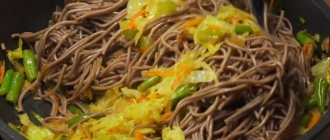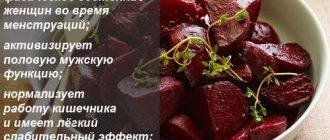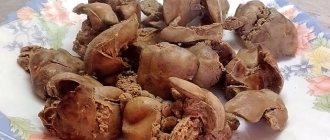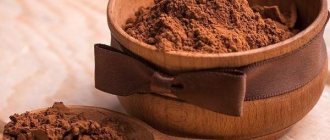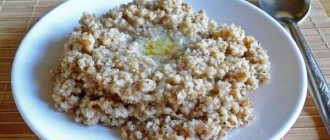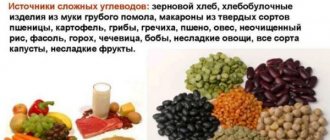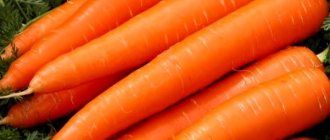Benefit
Boxed noodles have many beneficial properties, so they are often ordered in various establishments or prepared independently. For example, this product is enriched with B vitamins, as well as amino acids. Local residents of Japan, as a rule, consume such noodles due to their minimal calorie content, since they are based on light Saifun and Harusame beans.
The benefits of rice noodles have long been proven by doctors. It does not harm the body and has no contraindications, so it can be consumed by absolutely everyone.
As for the egg dish, it has long been a favorite in the European culinary tradition. Experienced chefs turn to it quite often, because it is one of the main ingredients of many delicious and aromatic dishes.
Rice noodles
In Asia they love rice in all its forms, and rice paste here is not at all exotic. It is most popular in Japan, China and Vietnam. It is sometimes confused with funchose, since both of these products look similar: long and thin threads connected into a ball. However, funchose is made from legumes, which allows it to maintain transparency when cooked. Rice paste is prepared from just two ingredients: rice flour and water.
Most often, rice noodles are presented in the form of vermicelli - thin (about 3 mm) threads, but there are also thicker varieties. The color is grayish-white, the texture is dense, there is a faint rice flavor with a nutty note. In China, there is a belief related to the length of the noodles: it is believed that the longer it is, the longer the life expectancy.
Rice vermicelli goes well with salads and soups. It is an ingredient in the famous Vietnamese pho bo soup and Thai pad thai (noodles with chicken or seafood, peanuts and vegetables). It is also very tasty when fried. Thicker products can be used as a classic side dish for poultry. Toppings – chopped herbs, ginger, nuts.
Benefits of rice noodles:
The main advantage of rice vermicelli is the absence of gluten. The product also contains no eggs, which is why the pasta is highly valued by vegans. Rice is an antioxidant and cleanses the body well, while saturating it with potassium and magnesium, zinc, and B vitamins.
Harm
Separately, it is worth considering “Rollton” - instant noodles, the cost of which is no more than 30 rubles per pack. It is not considered a natural product, since it contains too many dyes and harmful additives. That is why it is not worth putting “Rollton” on a par with the magnificent dishes of Asia.
In addition to the above, it is worth noting that nutritionists have long drawn the attention of consumers to the high calorie content of any type of noodles, including instant products. Because of this, people risk almost instantly gaining excess weight, which will not be so easy to get rid of.
Pasta diet - the opinion of nutritionists
Nutritionists around the world are unanimous in their verdict: noodles made from soft wheat are quickly absorbed in the body, and therefore contribute to obesity. A completely different matter is durum pasta, cooked until al dente. But you should not consume this product three to four times a day. There will be no benefit from this, on the contrary, only harm.
The human body must receive sufficient amounts of protein, vitamins and minerals. Therefore, he will quickly begin to suffer from “empty” pasta. Nutrition experts warn that spaghetti should not be supplemented with fatty dressings, otherwise the diet will not be beneficial. Moreover, you should not eat such dishes at night.
Properly prepared durum wheat pasta will not cause the slightest harm to your figure. They combine perfectly with other foods to make your diet effective and tasty.
Hello. I am very glad to have the opportunity to seek the opinion of an experienced specialist. The point is that at the age of 33, being a married man, he managed to accumulate excess weight in his body, thanks to which he lost his neat appearance and attractiveness, and was forced to significantly update his wardrobe.
Among other things, I lost the feeling of lightness, and instead received shortness of breath, a feeling of heaviness, frequent attacks of heartburn and periodic swelling. The other day I decided to think about losing weight and start following a diet. By the way, my wife is a wonderful cook, so even taking into account dietary dishes, it will be difficult to refrain from her culinary delights.
Now I’m interested in the following question: is it possible to eat noodles on a diet, and what kind of noodles? Our diet often includes homemade noodles and soups with them. Perhaps there are some special ways to prepare this dish in a more gentle way, so that it does not affect your weight and, as a result, your health. Thanks for the advice in advance.
Hello, you need to prepare noodles from durum flour, in which case its limited use is quite possible during the diet. It is better to combine noodles with vegetables or vegetable sauces. You can use it 2-3 times a week until 18.00. As for soups, cook them in vegetable broths, this way they will bring much more benefits to the body.
Contrary to the generally accepted opinion about the dangers of flour products for those losing weight, nutrition experts unanimously claim that you can eat pasta on a diet.
In order to avoid negative consequences from eating them, it is important to follow the basic rules for choosing products from the segment in question.
Modern manufacturers, trying to meet the needs of their consumers, offer them dietary, low-calorie pasta, most of which are made from durum wheat.
Having carefully studied the material below, a person who wants to get rid of extra pounds will find out which dietary food of the type in question can not only not harm, but also be beneficial when eaten while losing weight.
Rice
One of the most revered dishes of Asians is common in Japan and China. It belongs to the category of hearty dishes, but lacking a strong taste. When finished, rice noodles are quite elastic and pleasant to the touch. There are only 364 kcal per 100 grams of product.
The composition contains about 75% starch, which provides sufficient nutritional value. It also includes a full set of B vitamins, which are of great benefit to the human body. At the same time, it is worth noting minerals in the form of zinc, selenium, potassium, iron, phosphorus and other elements, due to the absence of which the general state of health worsens.
It is quite difficult to find the harmful properties of noodles, but its benefits are immediately noticeable. First of all, it is worth mentioning the large number of complex carbohydrates contained in the composition. They are designed to enrich muscle tissue, giving them energy for a long time. It follows from this that the product is an excellent nutritional option for those who are watching their figure. In addition, due to its minimal salt content, it can be safely consumed by people suffering from kidney diseases.
Nutritional value of instant noodles
Principles of the pasta diet:
- Flour products must be egg-free.
- Whole grains, spelled, durum pasta - this is the best choice when losing weight.
- Cook the pasta “al dente”, i.e. semi-soft.
- Boil it in plenty of salted water. Do not add oil to water.
- Do not rinse it with cold water after cooking. Drizzle olive oil.
- Forget about cheesy, creamy sauces. Use yogurt, cottage cheese, fresh cheeses.
- Complete the dish with unlimited quantities of leafy vegetables.
- Don't eat them late at night, especially before bed.
- Drink at least 2 liters of unsweetened tea or clean water every day.
The dish, true to its name, provides not only instant relief from hunger, but also saves time. It is a delicious and inexpensive food that is consumed by millions of people around the world. Affordable and popular among all age groups. And that's where the good part ends.
The harmful properties of noodles far outweigh their popularity. Even those varieties that are made from whole grains do not contain enough nutrients needed by the human body.
Noodle ingredients: flour, salt and palm oil. In the seasoning packets you will again find salt, flavorings, broth base and MSG.
Most noodles are low in calories, fiber and protein and high in fat, carbohydrates, sodium and some micronutrients. So, is it possible to eat noodles while losing weight if they are not as high in calories as classic pasta?
One standard 70 gram serving of chicken flavored noodles contains the following nutrients and nutrients:
- calories: 280 kcal;
- carbohydrates: 38 g;
- fat: 12 g;
- protein: 5.6 g;
- fiber: 0.9 g;
- sodium: 861 mg;
- thiamine: 43% DV;
- folate: 12%;
- manganese: 11%;
- iron: 10%;
- niacin: 9%;
- riboflavin: 7%;
- iodine: 150 mcg 100%;
There are special varieties that are marketed as healthy options. They are made with whole grains and have less sodium or fat. Or as in our example with the addition of dry kelp containing the daily requirement of iodine.
Is it possible to eat doshirak on a diet if you do not exceed your daily caloric intake? You can, because 280 kcal per meal is the least you can afford.
Conclusion: This dish is low in calories, fiber and protein, but high in fat, carbohydrates, salt and some micronutrients.
Yes, it has fewer calories than classic pasta. But also a low fiber and protein content. And a proper diet requires protein. It is slowly absorbed, has a thermogenic effect, builds muscles, which also consume energy, and speeds up metabolism.
But we know it's all about those little units of energy called calories. You can eat anything, if you create a calorie deficit, then weight loss is guaranteed.
Since these noodles contain fewer calories, consuming them can lead to weight loss.
To benefit from eating pasta, it is important to cook it correctly: it is better to undercook than to overcook. A pasta diet should include slightly uncooked products. Then the dish will be digested more slowly.
To cook spaghetti you need:
- For every 100 g of product you need a liter of water.
- Bring water to a boil over medium heat, add salt, a little olive oil, then pasta.
- Stir regularly during cooking.
Manufacturers indicate the recommended cooking time on the label. It can be from 3 to 5 minutes depending on the thickness (diameter) of the spaghetti. This condition is called "al dente". Proper pasta should taste bouncy, not mushy noodles. They need to be chewed calmly; due to this, a person eats more slowly, eats less, and does not overeat.
Wheat
This type of noodle is considered the most common of pasta products. It is made from water and wheat flour. The calories in noodles are a pleasant surprise for those losing weight. Per 100 grams of product - 337 kcal.
This variety appeared around 5000 BC, but is still very popular today. Royals highly valued the product and often enjoyed its taste. Initially, it could only be purchased by noble segments of the population, but literally in the last century it became available to everyone.
Ramen
Among the well-known types of noodles, it is necessary to include the product whose appearance is familiar to all people. It flaunts on store shelves as an instant product. Included with it, the buyer receives seasoning and oil of dubious origin. By pouring all these components with hot water, the consumer receives an almost complete pasta product, called in our area “instant noodles.” Its calorie content is 340 kcal.
Ramen is typically served with meat broth, bamboo shoots, green onions, eggs and ginger root. All these ingredients perfectly complement it, making the taste brighter and more memorable.
Funchoza
Soy noodles, a type of Asian cuisine, are sold dry. It is a favorite among gourmets. It is often called glass, because in appearance it really resembles glass. After cooking, the funchose threads acquire a transparent texture. Calorie content per 100 g is only 320 kcal.
The composition of the noodles is considered rich. There is starch from legumes, which include mung, yam, canna and potato. Today, corn starch is increasingly used for its preparation.
The benefits of funchose are undeniable. It lies in the vitamin and mineral composition. The product contains vitamins B, PP and, of course, E. In addition, there are minerals: potassium, phosphorus, magnesium, selenium, iron. As a rule, noodles are not salted when cooked, so people with kidney problems are allowed to consume them in any quantity.
If there are no calories, then what to eat? Composition of shirataki noodles
Today, the industry for the production of various types of pasta from konnyaku raw materials is growing by leaps and bounds.
Shirataki spaghetti is the most widespread and popular - for its delicate consistency it is poetically called “angel hair”. Also available to those losing weight who care about menu variety are vermicelli, fettuccine, tagliatelle and even layers of shirataki lasagna, as well as shirataki rice, which at first glance is indeed indistinguishable from the well-known cereal, but in fact turns out to be another type of shirataki pasta.
All “magic pasta” are made in the same way: konnyaku roots are washed, dried and ground into flour, to which calcium hydroxide (food additive E526), which serves as a thickener and emulsifier, is added, and water is added. Pasta of the desired shape is formed from the resulting dough.
Their nutritional value is the same and unchanged; any type of shirataki pasta looks like the cherished dream of a person on a diet: no gluten and lactose, 0-9 calories, 0-0.3 g fat, 0-0.5 g protein (indicators may vary depending on the manufacturer). A small amount of carbohydrates is still present in the noodles - in a serving portion of the finished product (90 g) their share will be from 0.3 to 1 g. The glycemic index of shirataki is zero.
Alas, shirataki noodles are practically sterile not only in terms of macronutrient content, but also in terms of vitamin and mineral composition. The only exception is, perhaps, iron - a serving of pasta contains approximately 8% of the daily requirement of an adult. It is likely that shiratake food enriched with the missing benefits will soon appear on the market.
Certain questions are raised by the presence of calcium hydroxide, also known as slaked lime, in the paste. Despite the fact that this additive is widely used in the food and confectionery industry as an effective chemical stabilizer, nutrition experts warn that excessive consumption of E526 can cause poor health and disruption of the gastrointestinal tract. This is also why, despite all the attractiveness of spaghetti and shiratake rice for weight loss, it is not recommended to eat only them.
Soba
Japanese noodles are closely related to the must-have dishes of Southeast Asia. It is very popular in China and Japan. The dish is usually served cold. This is explained by the climatic conditions of the regions, because the summer period there is always very hot and with high humidity. At the same time, per 100 g of dish there are only 350 kcal.
The benefits of Japanese noodles have been proven many times by scientists. Here, the first thing we need to mention is the fact that buckwheat itself has many beneficial properties, thanks to which it has a positive effect on the consumer’s body.
Soba is made from buckwheat and has a mild taste. As a rule, it is made as a separate dish, soups are cooked with it and served as a cold appetizer. At the same time, you can cook it in both regular and salted water, since this has almost no effect on the taste. The most important thing is to rinse the noodles with cool, clean water to remove any remaining starch.
Green tea is often used in the preparation process. It allows you to achieve a more refined taste and significantly increases the benefits. The result is a dish that can be classified as an unusual delicacy.
Shirataki
The traditional type of noodles for Japanese residents is gaining popularity among other nationalities every year. This option is distinguished by its appearance, since the strips are very thin and transparent, and also by its negligible nutritional value. Calorie content per 100 grams is equal to 9 kcal.
The noodles contain amorphophallus konjac. It goes on sale both dry and soaked. In the second option, there is very little water and a food additive such as glucomannan, which is soluble fiber classified as dietary.
The benefits, of course, depend on the composition. Fiber plays a special role here, as it has an absorbent effect and lowers cholesterol levels. In addition, noodles, unlike an instant product, allow you to regulate stool and significantly improve digestion.
Shirataki is even included in the list of allowed foods on the Dukan Diet. There it is allowed to be consumed in unlimited quantities.
Are noodles for weight loss allowed on the menu and what kind?
Rice noodles come in two types: traditional and funchose. The benefits of rice noodles for weight loss include the following qualities:. This type is prepared using mung bean starch. The noodles have no distinct taste. After cooking, the dish has a calorie content of no more than 80 kcal per g. The glycemic index is less than 50, so the product is suitable for diabetes and allergies.
Noodles are suitable for a diet for weight loss. Including Chinese in the diet helps normalize digestion and remove toxins and waste from the body.
All this is reflected in improving the quality of skin and hair. Egg noodles are usually prepared at home. It is made from flour, eggs and salt. Therefore, such noodles, unlike other types, contain a sufficient amount of protein.
But, nevertheless, during a diet you need to consume such noodles in extremely measured doses due to the following disadvantages: Thus, this species is not entirely suitable for dietary nutrition.
You should eat homemade noodles no more than a couple times a week. Noodles are made from wheat flour, which contains a lot of fast carbohydrates. It quickly increases glucose levels and insulin release. Thus, unprocessed energy is stored in reserve.
Contains palm oil. But, despite the benefits of the product in its purified form, it ends up in such a dish of the lowest quality.
It is palm oil that can provoke weight gain. Instant noodles also contain many other preservatives, stabilizers, and flavorings that can be toxic. Noodles are very popular in Japan. It is eaten as often as rice. Noodles are prepared from wheat flour, which should contain a lot of starch.
What types of pasta can you eat on a diet?
It is quickly digested and stimulates appetite. Nevertheless, noodles contain many vitamins, macro and microelements. Therefore, it can still benefit the human body. You can eat the udon noodle dish either hot or cold.
It is served in broth, as well as with seafood, vegetables, mushrooms, ginger, and soy sauce. The noodles are made from the konnyaku root vegetable. The ingredients from which noodles are made not only do not contribute to weight loss, but also harm the figure, as they lead to the development of obesity.
Home Diets Mixed. Contents What are instant noodles? Calorie content of the product Pros and cons Conclusion. Ingredients of instant noodles. No comments.
Whole grain
Pasta takes up a fairly large part of every person’s diet. Whole grain noodles are consumed by almost all people and are used to prepare various dishes. It is produced, as a rule, from premium durum wheat. There are about 305 kcal per 100 g of product.
The noodles contain rye and wheat flour. Thanks to it, the main ingredient retains all its constituent elements, and, consequently, biologically active substances with vitamins. This increases the number of beneficial properties for the human body.
The benefit of the product lies in the content of the necessary elements. Vitamins B, E, A, H, as well as PP are present here. In addition, the composition contains iron, potassium, magnesium, molybdenum, plant estrogens and dietary fiber. Other pasta products cannot contain as many properties, so whole grain noodles are always held in high esteem.
What kind of noodles can you eat on a diet?
Pasta that makes you lose weight! Is it possible to eat pasta while losing weight: benefits and recipes Svetlana Markova.
If you want to lose weight, nutritionists advise choosing dietary pasta, which is made from water and durum wheat flour. Pasta for weight loss contains less harmful easily digestible carbohydrates, unlike pasta made from soft wheat varieties. Complex carbohydrates in a dietary dish saturate the body for a long time, being slowly absorbed. The moral component of the diet is the most important, because it determines whether a person will continue to want to adhere to the diet.
Contents 1. What is dietary pasta 2. What are the benefits 3. Does pasta make you fat 3. How many calories per serving 4. What kind of pasta can you eat while losing weight 4. Made from durum wheat 5. Pasta diet for weight loss 5.
Recipes for dietary pasta 7. Casserole 8. With chicken 9. With vegetables With cheese Lenten with seafood The information presented in the article is for informational purposes only. The materials in the article do not encourage self-treatment. Only a qualified doctor can make a diagnosis and give treatment recommendations based on the individual characteristics of a particular patient.
Did you like the article? But a pleasant bonus was a significant improvement in digestion, the skin on the face became cleaner. To better preserve the vitamins in the funchose, I do not boil the noodles, but pour boiling water over them and leave for about half an hour. Moreover, I filter the remaining liquid and drink half a glass daily in the morning on an empty stomach.
Cooking secrets
Tasty and high-quality noodles in boxes come out for a reason. To do this, manufacturers use some secrets that always help to achieve good results and truly surprise consumers. Once you know them, you can prepare a truly delicious dish, free of flaws. The main secrets include the following points:
- Cooking time. It is recommended to cook any noodles for 8 minutes. If you increase this time, it will turn into mush. As for Italian noodles, it is better to boil them for no more than 5 minutes.
- Flavored product. You can add herbs, mushroom powder and other spices to the dish, changing its taste, as well as adding a light aroma. But at the same time, you need to be careful that the smell of the noodles matches the products that are used as a complement to it.
- Dough proofing. After mixing the ingredients, the finished mixture will need to sit for at least half an hour.
- Slicing. When the dough dries, it can be easily cut with a knife.
- Type of flour. It is best to prepare noodles from premium flour, as this is what will ensure good shape.
- Storage. If there is a need to keep the noodles in a remote place, they must first be thoroughly dried and distributed into cardboard boxes.
Will you get better from the “correct” spaghetti or not?
When deciding to include durum wheat pasta dishes, it is important to carefully consider the sauce and other additions to it.
Eating exclusively, for example, boiled “proper” spaghetti without fatty Bolognese, carbonara and so on sauces, is impossible to gain weight.
Complex carbohydrates, namely the insulin released due to them, in combination with fats, contained in high concentrations in gravies and sauces, provoke an increase in fat in the thighs, sides and abdomen.
By correctly differentiating the intake of carbohydrates and fats into the body, a person who dreams of an ideal figure will be able to minimize the number of calories by reducing the frequency of meals. Satiety maintained over an extended period is due to the long time it takes the body to digest complex carbohydrates.
Home option
The legendary homemade egg noodles are made from simple ingredients and do not require any special skills. For this you will need to take:
- 300g flour;
- a couple of eggs;
- 5 g salt;
- 1/2 glass of water.
If desired, you can experiment with homemade egg noodles by changing the taste. To do this, you can take not only wheat, but also rye, buckwheat or rice flour. By combining several types, the end result is sure to produce a memorable taste.
The process of making noodles is very simple:
- Sift the flour into a mound and then make a well in it.
- Beat the eggs into the center and add salt.
- Gradually add water and knead the dough.
- Mix the mixture with a spoon, then knead with your hands.
- Roll out the resulting dough into a thin sheet.
- Cut the layer into strips and leave for 20-25 minutes.
- Cook as usual (until required softness).
"Carrot" dish
An amazing and memorable dish is noodles with carrots. The main ingredients here are:
- vegetable oil - a tablespoon;
- carrots (already grated) - 200g;
- eggs - 3 pieces;
- salt;
- flour - as much as needed to thicken the dough.
The first step is to boil the carrots. When it has cooled, all ingredients, except flour, need to be mixed in a blender. Then pour flour into a homogeneous mass in a thin stream, stirring at the same time. The result should be a stiff dough. It must be divided into 4 parts, each of which is rolled out and cut into strips. They need to dry for no more than half an hour. The noodles are cooked as usual.
Udon
Lenten noodles have a rather labor-intensive preparation process, but also have a great taste. For it you will need:
- 500 g flour (unrefined);
- glass of water;
- 4 small spoons of salt;
- 150 g wheat flour.
First you need to heat the water and dissolve the salt in it. Afterwards, pour all the flour into a deep container and mix thoroughly. Then water and salt are poured in and the dough is kneaded.
The elastic and tough mass must be rolled into a ball, wrapped in a bag and covered with a towel. In this position, the dough should be beaten with a rolling pin, then taken out and rolled into a thin sheet. Immediately after this, it is folded in half and all previous steps are repeated with wrapping it in a plastic bag 3 times. When you get a perfectly smooth dough, you need to keep it for 4 hours, and then beat it for the last time and roll it out as thin as possible.
The resulting layer must be folded three times, with the sides overlapping toward the center. Next, use a sharp knife to cut the dough into rings, the thickness of which does not exceed 5 mm. Immediately after this they need to be boiled for 8 minutes.
